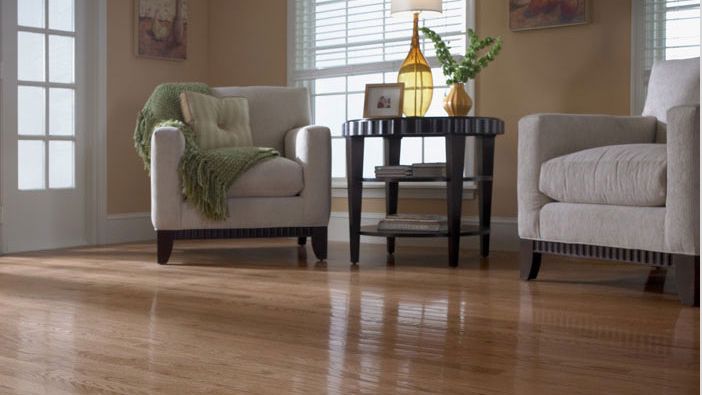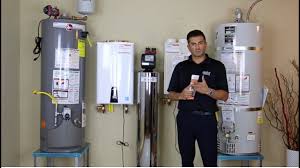Choosing the Best Long Distance Moving Company
You wouldn’t hire just anyone off the street to move your household across the country, you’re clear on that much — but how exactly does one find the best long distance moving companies amidst all the options listed online? They all claim they’re the best, so it’s best to have a solid checklist of criteria that can help you weed out the riff-raff and find a team of long distance movers who will make your move an enjoyable process. Here is what you should be looking fo
Are your movers an established, experienced company?
The best long distance movers didn’t get that way overnight – they have spent years fine-tuning their process, training their staff, and getting those early “learning mistakes” out of the way. When it comes to interstate moves, there are quite a few more details that a company needs to consider that aren’t involved in a local move. Crossing state borders, for one, requires additional licenses and paperwork. Your belongings also have further to travel, so the company must be certain that everything is well secured and stable for the haul. Don’t leave your move up to newbies!
Are your movers licensed and insured?
This should be a no-brainer, but the best national moving companies should be able to quickly and easily provide proof of their licensure and insurance with zero runarounds. You can check a mover’s license on the Federal Motor Carrier Safety Administration’s website, but you shouldn’t need to do that research yourself. Ideally, the company has its FMCSA license number displayed in plain sight and offers you a full explanation of their insurance and options for additional insurance when you request your quote.
Does your mover offer a detailed quote, estimate, or guaranteed price?
A verbal estimate holds no weight in the world of moving services, so when comparing the costs associated with each long distance moving company, make sure you know that you’re comparing apples to apples. The best-rated cross country moving companies are clear and transparent about the cost of moving long distance and provide a line by line breakdown of what they are quoting. Movers want to just give you a number without telling you what it includes? Time to look elsewhere.
Is your mover well-reviewed?
Good service inspires good reviews, so look for an interstate moving company that has a good track record according to their customers. The FMCSA website will offer safety reviews, and the Better Business Bureau, Yelp, and these days even Google will provide customer experience information. Keep in mind that no company can escape a bad review or two, but they shouldn’t be the majority!

How to Choose the Best Long-Distance Movers
As if moving long distances wasn’t enough of a hassle (to say nothing of the stress factor) – finding a trustworthy company to ship your valuable goods over many miles, can seem like a gargantuan task. There are plenty of horror stories circulating about cross-country moves gone bad. They typically involve dishonest outfits who either aren’t moving companies at all, but merely an Internet front to steal your money and/or goods, or moving companies who hold your possessions hostage until you pay more than agreed. Either way, that’s not a path you want to go down. To help you stay as far away as possible from any shady transport companies, here are some suggestions for choosing the best long-distance movers
Confirm They’re Licensed and Insured
You wouldn’t dream of taking your car out on a long distance trip without having the proper insurance, would you? Imagine the horror if you got into an accident (even just a fender-bender), 1,000 miles from home. Now imagine that same scenario, except it’s a large moving truck with all of your belongings inside. They might be damaged at best – and at worst, destroyed. You would want to be compensated if this type of scenario occurred
USDOT Number
Hiring a properly insured moving company is important regardless, but it’s especially imperative if you’re having your goods hauled over long distances – where anything can happen along the way. The best way to discover the insurance status of a prospective moving company is by tracking their USDOT number. They receive this from the Federal Motor Carrier Safety Administration (FMCSA), a subset of the United States Department of Transportation
The FMCSA Website
You should be able to easily obtain the USDOT number and use it on the FMCSA website, to look up pertinent information about the moving company in question. This will include if they have any complaints filed against them or if they’ve incurred any safety violations while operating. The best place to check is the FMCSA’s Search Movers and Complaint History page. This site enables you to search interstate movers not only by USDOT but also by company name (even partial name) or MC number. This MC number is attributed to them when they register with the FMCSA and receive “authority to operate” as licensed movers.
Released Value Coverage
The other kind of valuation coverage, which is typically applied only if you specifically request it, is called Released Value. You might choose this option because it knocks a significant amount of money off your moving bill – but you should be aware of how it works. In fact, it provides quite minimal coverage. If something is damaged, the moving company only owes you 60 cents per pound for any broken item.

Tips to Help You Find the Best Movers Every Time
Shopping for moving companies is a huge undertaking, we know! From national long-distance movers to the local guys moving with a rental truck, there are a lot of companies to consider.
Check How Long the Company Has Been in Business
If the moving company you’re talking with was just born yesterday, it’s hard to tell whether they have the credentials for your move. For complex national or international moves, a good rule of thumb is to hire a moving company with at least a decade of experience planning and executing these moves
Licensed & Insured Moving Companies
If the company is not properly licensed or insured, this could mean a big risk for your belongings. If you aren’t sure how to check this out, then look at their company website. Either on the homepage or in an About Us section, companies will normally list their Department of Transportation (DOT) licensing and insurance information. If you are still suspicious, ask the company for proof of their insurance or whether they are a member of the Better Business Bureau.
Moving Services Offered
It is important to know the span of work that the moving company can perform. Most moving companies should be able to perform house-to-house moves within their territory. If there are any specialty items, however, your moving company may not have the manpower or equipment to perform the job
Check Their Reviews Online
Reading reviews from former customers of a moving company is a great way to research your options. Depending on the company, you can usually go to the BBB.org, Google, Facebook or Yelp to find reviews from customers. The star rating is normally out of 5, with 1 being the worst and 5 being the best. Companies with 4 stars and above are usually great to work with. You also can check to see if they’re a certified professional mover by the American Moving & Storage Association.

How to Choose a Long Distance Mover
When moving across the country, the first thing you must know is that hiring a moving truck and driving that big moving vehicle across multiple state lines is not a good idea. Actually, it often turns out to be a bad idea because of the high DIY moving costs and increased risks when moving long distance without professional assistance.
As you can imagine, there’s a huge difference between moving 200 miles and moving 2,000 miles until you reach the new home. Be mindful that the move distance will not only determine the final moving price to a great extent, but it will also influence the way you assess the relocation risks before you move out.
Why hire a long distance mover?
Before you start preparing for your house move, it’s important that you take the time to think about how exactly you are going to handle the house moving project. To make an informed decision, you’ll need to take a closer look at several key points, the major one being the DISTANCE between Point A (the current home you’re moving out of) and Point B (the destination home you’re about to move into soon).
Self-move expenses. The cost of renting a moving vehicle of the right size and purchasing the required insurance is the first step. Then add the cost of fuel, road tolls, parking fees, meals and lodgings along the trip as well. Factor in the cost of all the packing supplies and the price of renting or purchasing the necessary moving equipment (a moving dolly). Finally, set up a contingency fund because you never know what may happen on the road to your new home.
Risks and dangers. Driving a big rental moving truck across multiple state lines is a risky business, especially if you’ve never done it before. Each driven mile increases the risk of something bad happening on the road. Sustaining personal injuries or inflicting property damage are two other highly undesirable scenarios that will further complicate the risk assessment task when moving without using the services of a long distance mover.
Best Long Distance Moving Tips, Ever
Whether you’re moving to a new country or just a few hundred miles, you’re going to need some fantastic long distance moving tips to make it happen. From the moment you find out you’re moving, to the day your belongings are finally delivered to your new home, you won’t have to worry about missing a beat.
Tips to Help You Prepare for a Long Distance Move
For some moves, you just need to throw everything you own in the back of a van and hit the road. A long-distance move, on the other hand, requires a lot more planning. The long distance moving tips below will help you remember everything you need to do ahead of time in order to have a successful move.
Make a plan as soon as you know you’re moving
You’re about to move everything you own hundreds or thousands of miles away. That kind of enormous task requires a plan! Whether you like to go with the flow or you want every moving-related to-do recorded in a spreadsheet, you should write down every moving-related task you need to accomplish. We know that’s a lot to juggle, so to help you out, we’ve already created the ultimate moving checklist to help you through every phase of your move
Stay on schedule
Now that you’ve got a plan, you need to stay on schedule. Tasks like utility installation and school enrollment are time sensitive, so you don’t want to be scrambling to complete everything at the last minute. To keep yourself from forgetting what you need to do and when, try scheduling chunks of time on your calendar for moving-related tasks or setting up reminders on your phone. Follow this long distance moving tip, and you’ll be on schedule and ready for a stress-free move in no time!
Get multiple in-home moving estimates
Since you’re moving such a long distance, you need to do everything you can to find the right moving company. Part of this process is getting in-home estimates from at least three different moving companies. We recommend scheduling your estimates four weeks before your move, but the earlier the better. Don’t forget to make sure the price estimate is as accurate as possible by preparing your home properly for the in-home estimate.




























